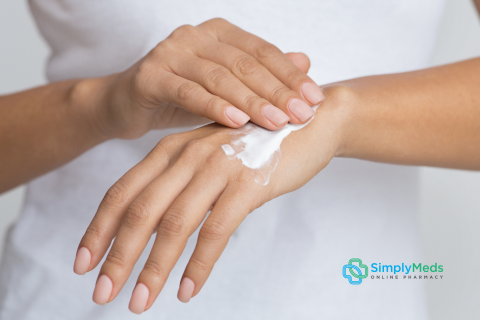
Aug 12, 2025 Skin Care
Whether you're preparing for a medical procedure, blood test, cosmetic treatment or seeking pain relief prep for another reason, getting the most out of Emla cream starts with using it correctly.
Emla is a local anaesthetic cream containing lidocaine and prilocaine, commonly used to numb the skin before minor procedures. If you have children you may have heard it called, “magic cream” or similar, as it numbs an area making procedures like having a cannula inserted or an injection given, painless (and for younger patients, less scary). Emla is highly effective when used properly, but small errors in application can lead to reduced effectiveness or unnecessary discomfort.
In this blog post, we walk through how to apply Emla cream, highlight the most common mistakes and explain how to use occlusive dressings the right way. If you’re using the Emla Cream 5g tube 5-pack with 12 dressings, this guide is designed to help you get the best results.
The effectiveness of Emla cream depends on proper timing, dosage and skin preparation. When applied correctly, Emla numbs the skin within about an hour, helping to minimise pain or discomfort from procedures such as injections, cannula insertions or minor skin treatments.
Incorrect use can lead to insufficient numbing, reduced protection or even skin irritation. That is why following the product instructions and using the correct technique is so important.
From applying it too late to forgetting the dressing, there are several common mistakes that reduce the effectiveness of Emla cream. Fortunately, most of them are easy to avoid with a few simple tips.
In this post, we cover five of the most common errors and how to prevent them.
Occlusive dressings are an essential part of how to apply Emla cream effectively. These airtight coverings trap the cream against the skin, allowing it to penetrate fully and do its job.
The Emla 5-pack includes five 5g tubes and 12 occlusive dressings, making it easy to use Emla exactly as it should be.
Here is how to use a dressing properly:
Using the dressing correctly ensures the cream remains in contact with the skin and does not dry out or become less effective.
Emla needs time to work. The cream typically takes at least 60 minutes to fully numb the skin, and in some cases up to 90 minutes for deeper procedures. Applying it too late may result in inadequate pain relief.
Tip: Set a timer as soon as you apply the cream to ensure it is left on long enough. Prepare well in advance of your appointment or procedure.
Applying too little cream can mean the numbing effect is too shallow or uneven. Emla should be applied in a thick layer, roughly the size of a £2 coin for smaller areas. For larger areas, follow the guidance provided in the information leaflet or consult your pharmacist/health care professional.
The Emla 5g tube is often enough for one application on a small to medium-sized area. Always check how much is required based on where it is being applied.
The dressing is optional, but recommended. Without it, Emla may dry out or be rubbed off, which drastically reduces its ability to penetrate the skin. The cream works best when held in place and shielded from air.
If you are using the Emla cream with included dressings, follow the instructions for application and removal. If you run out of dressings, they can be purchased separately from most pharmacies.
The area of skin where Emla will be applied should be clean and dry. Oils, lotions or dirt on the skin can act as a barrier, reducing absorption of the anaesthetic.
Clean the area with mild soap and water, then dry completely before applying the cream. Avoid using alcohol wipes unless instructed, as they can irritate sensitive skin.
Although Emla needs time to work, leaving it on for too long (especially beyond 2 hours) can increase the risk of skin irritation or unwanted side effects. The ideal window is between 60 and 90 minutes unless directed otherwise by a healthcare provider.
Remove the dressing and cream just before your appointment or treatment, and wipe the skin clean. Do not reapply unless advised by a doctor or pharmacist.
Some people also use Emla for other personal concerns, such as premature ejaculation. In these cases, the technique and timing differ slightly. It is important to follow the guidance on the specific product or speak to your pharmacist for safe use.
For medical guidance, visit the NHS page on lidocaine cream or review additional instructions on Drugs.com. Always read the patient information leaflet that comes with any treatment carefully before use. Ask for guidance if you are unsure.
Emla cream is licensed for sale by the MHRA (UK medicines authority) and has been a trusted product used by many, both at home and in healthcare settings.
Understanding how to apply Emla cream, or “Magic Cream”, correctly ensures you get the maximum benefit with minimum fuss. Whether you're using the Emla 5g tube for an injection or blood test or more involved pain relief prep, avoiding common mistakes will lead to a significantly more comfortable experience.
Using the right amount of cream, applying it early enough and making proper use of the occlusive dressings, like those included in the Simply Meds Online 5-pack all contribute to better results.
If you’re unsure, always ask for pharmacy advice. Our team at Simply Meds Online is here to help you use products safely and effectively.

There’s a lot to think about o... Read More..

Almost everyone takes medicine at so... Read More..

Each November, Diabetes Awareness Mo... Read More..

With Black Friday just around the corner, we'v... Read More..

Eczema Awareness Month falls in Octo... Read More..

18th October marks World Menopause D... Read More..